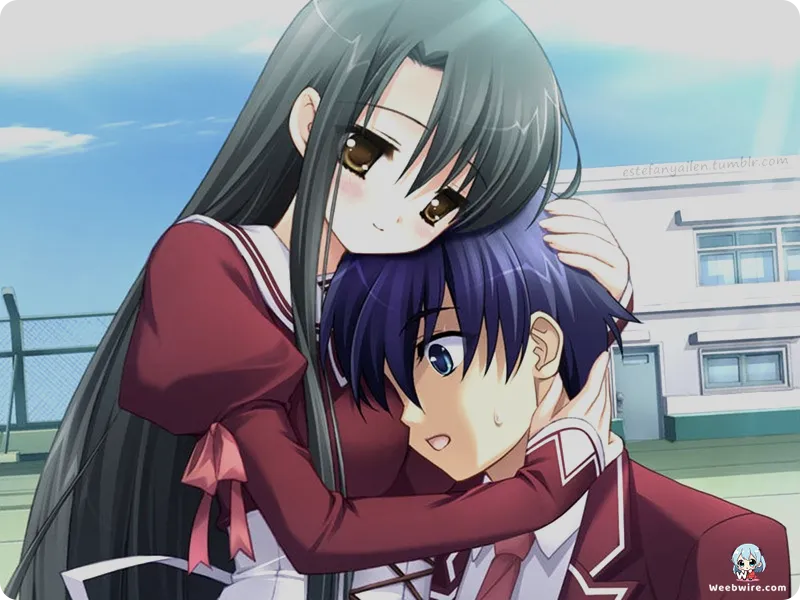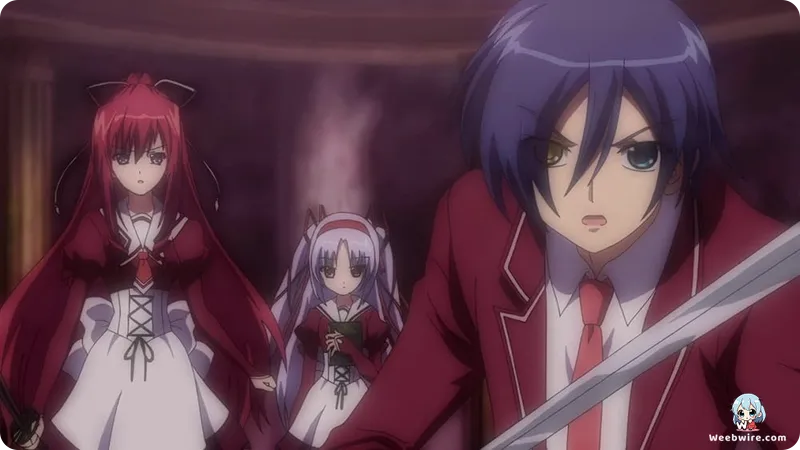Unveiling the Hidden Depths of '11eyes': A Supernatural Thriller's Surprising Origins and Dogakobo's Pivotal Role

Dive into the enigmatic world of '11eyes,' the 2009 supernatural thriller that, despite its gripping narrative, often remains an intriguing hidden gem in the vast anime landscape. While contemporary audiences associate animation powerhouse Dogakobo with their beloved, heartwarming slice-of-life comedies, '11eyes' stands as a striking testament to the studio's early versatility, showcasing their prowess in crafting a dark, action-packed mystery. This series plunges viewers into a desperate race against time within mysterious dimensions, filled with magical battles and profound secrets. Yet, beyond its immediate appeal, many fascinating layers concerning its origins, production nuances, and fan reception remain largely unexplored, offering a richer appreciation for this compelling work.
From Visual Novel to Anime Screen
One of the most astonishing revelations for those encountering '11eyes' for the first time is its unexpected genesis as an adult visual novel, specifically an 'eroge,' developed by Lass. Launched for PC in 2008 under the title '11eyes: Tsumi to Batsu to Aganai no Shoujo' (Sin, Punishment, and Atonement Girl), the original game featured explicit content intertwined with its intricate supernatural narrative. The anime adaptation faced the monumental task of transforming this mature source material into a broadcast-appropriate television series. This necessitated a significant re-calibration, shifting focus away from the H-scenes and emphasizing the core action, psychological drama, and unfolding mystery. This delicate balance, crucial for reaching a broader audience, was deftly managed, resulting in an adaptation that, while distinct, successfully preserved the compelling essence of the original premise.
Furthermore, the visual novel's inherent design, characterized by multiple branching storylines and diverse character-specific endings, offered players a panoramic view of relationships and plot trajectories. The anime, constrained by a linear 12-episode format, streamlined the narrative, predominantly following Misuzu Kusakabe's arc while skillfully integrating elements from other character storylines. This narrative compression, a practical necessity, occasionally resulted in character developments feeling expedited or certain plot points less thoroughly explored for avid fans of the game. For instance, the complex motivations and emotional depth of characters like Yuka Minase, often perceived as polarizing due to her intense dependency on protagonist Kakeru Satsuki, are far more extensively fleshed out across the game's expansive routes, providing crucial context to her journey of love, jealousy, and self-sacrifice.
Dogakobo's Unexpected Turn
Perhaps the most compelling aspect for current anime enthusiasts is the involvement of Dogakobo. Today, the studio is virtually synonymous with titles like 'Yuru Yuri,' 'New Game!,' and 'Monthly Girls' Nozaki-kun,' celebrated for their vibrant animation, expressive characters, and comedic brilliance. '11eyes,' however, represents a stark departure, showcasing the studio's earlier ventures into a significantly darker, action-centric supernatural thriller genre. This dramatic stylistic divergence highlights Dogakobo's foundational versatility and willingness to experiment in its formative years, proving their capability to execute intense fight choreography, employ darker color palettes, and maintain a serious tone before cementing their reputation in the slice-of-life domain. It serves as a powerful testament to the studio's deep-rooted animation skills and their capacity to pivot between vastly different genres.

The Enigma of the Red Night
The core enigma of '11eyes' centers around the sudden, terrifying emergence of the 'Red Night' a crimson alternate dimension teeming with monstrous entities. This phenomenon is not merely a visual spectacle but a pivotal narrative device intricately linked to a complex magical lore involving ancient artifacts known as the 'Fragments of the Lapis Lazuli.' These powerful items, coveted by both the protagonists and their formidable adversaries, the 'Black Knights,' bestow immense abilities and are key to unraveling the true nature of the Red Night and the ultimate conflict. The lore surrounding these fragments, their connection to ancient magical orders, and the true origin of the Red Night (revealed as a dimension orchestrated by the Black Knights for their 'game') is remarkably elaborate in the source material, though the anime judiciously simplified some deeper explanations for pacing.
A Resonating Soundtrack
Even the auditory landscape of '11eyes' commands attention. The opening theme, 'Arrival of Tears' by Ayane, and the ending theme, 'Sequentia' by Asami Imai, are widely acclaimed by fans for their atmospheric qualities and their uncanny ability to perfectly encapsulate the anime's dark and urgent tone. These tracks deeply resonated with viewers, often leaving a more lasting impact than some plot resolutions, underscoring the profound influence of music in shaping the audience's experience. The powerful score further heightens tension during supernatural confrontations and amplifies the emotional stakes.
Fan Reception and Adaptation Challenges
Despite its compelling premise and strong initial momentum, '11eyes' garnered mixed reactions from visual novel aficionados, primarily due to the aforementioned pacing challenges and the necessary simplification of its intricate plot and character arcs. Adapting visual novels often presents the daunting task of compressing dozens of hours of gameplay and multiple narrative branches into a limited anime runtime, a challenge '11eyes' navigated with varying success. While some viewers felt the anime successfully captured the essence of the supernatural battles and the escalating stakes, others believed it couldn't fully convey the original story's lore depth or the nuanced emotional journeys of its characters. Nevertheless, the anime served as a vital entry point, introducing many new fans to the world of '11eyes' and its distinctive blend of action, mystery, and dark fantasy.
In essence, '11eyes' remains a compelling case study in anime adaptation. From its surprising origins as an adult visual novel to its production by a studio now celebrated for vastly different genres, and its efforts to condense a sprawling narrative, the series offers far more depth than initially meets the 'eye.' It stands as a powerful testament to the inherent challenges and creative decisions involved in translating complex interactive stories into the linear medium of animation, solidifying its place as a unique, and often underestimated, entry in the supernatural action genre.
Credits
11eyes
Author
Kou Yajima (Lass)
Cover Art
Mitha
Studio
Dogakobo
Publisher
Lass
Producers





